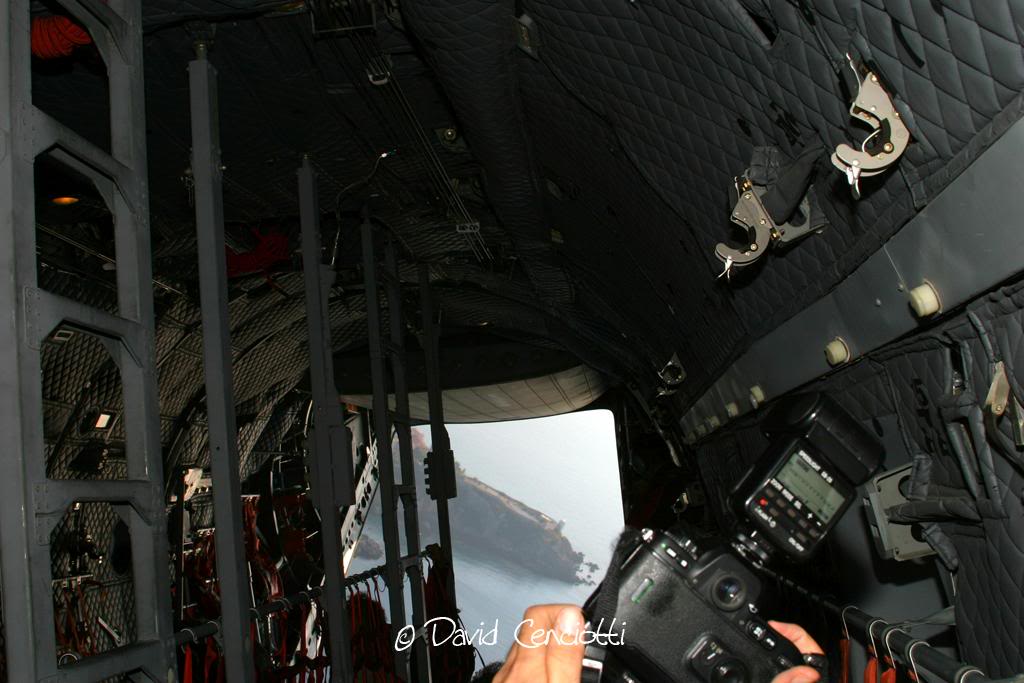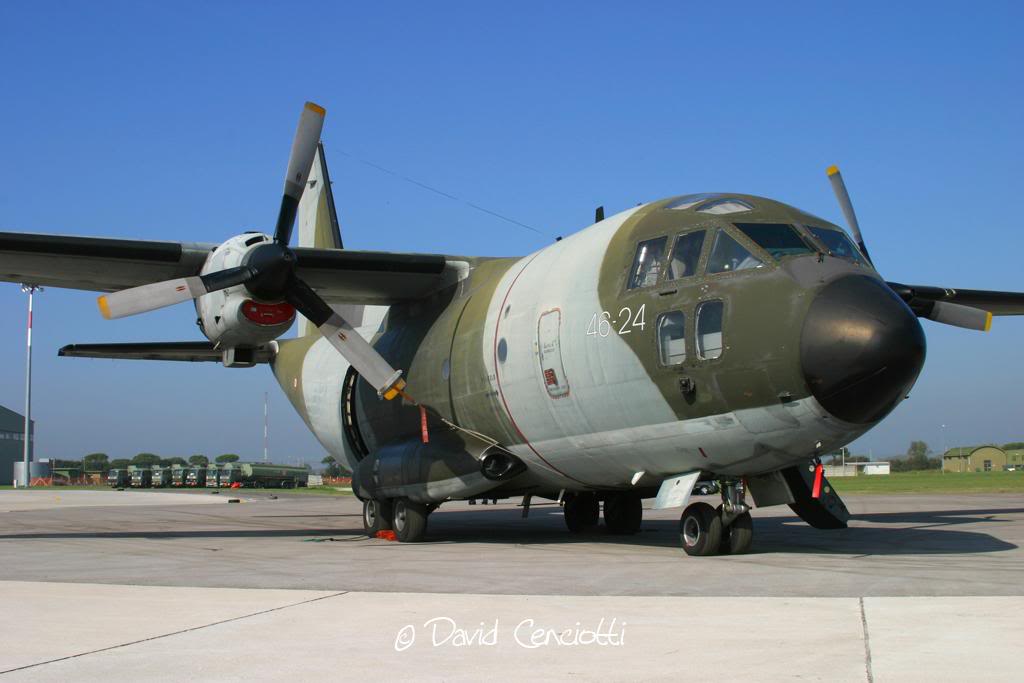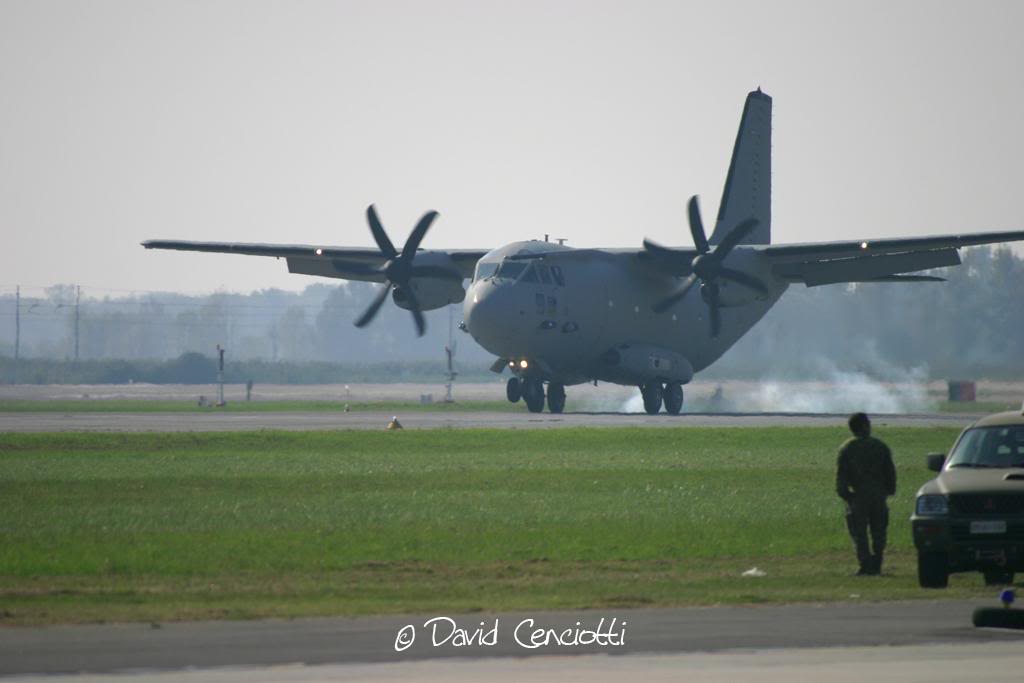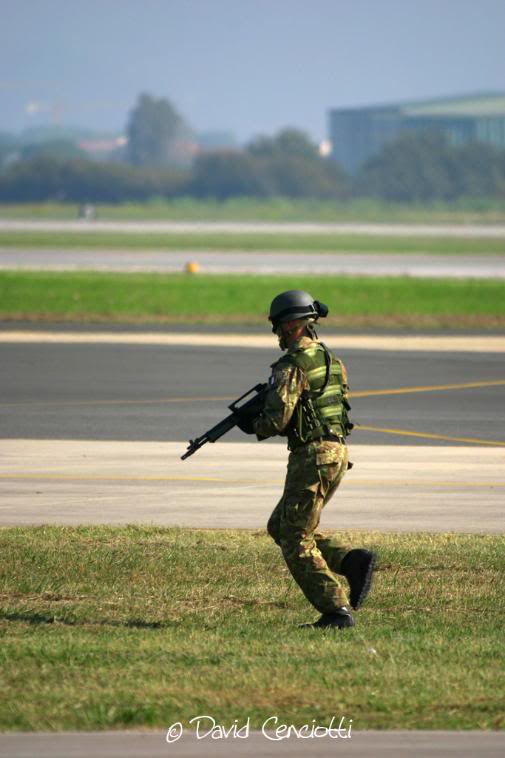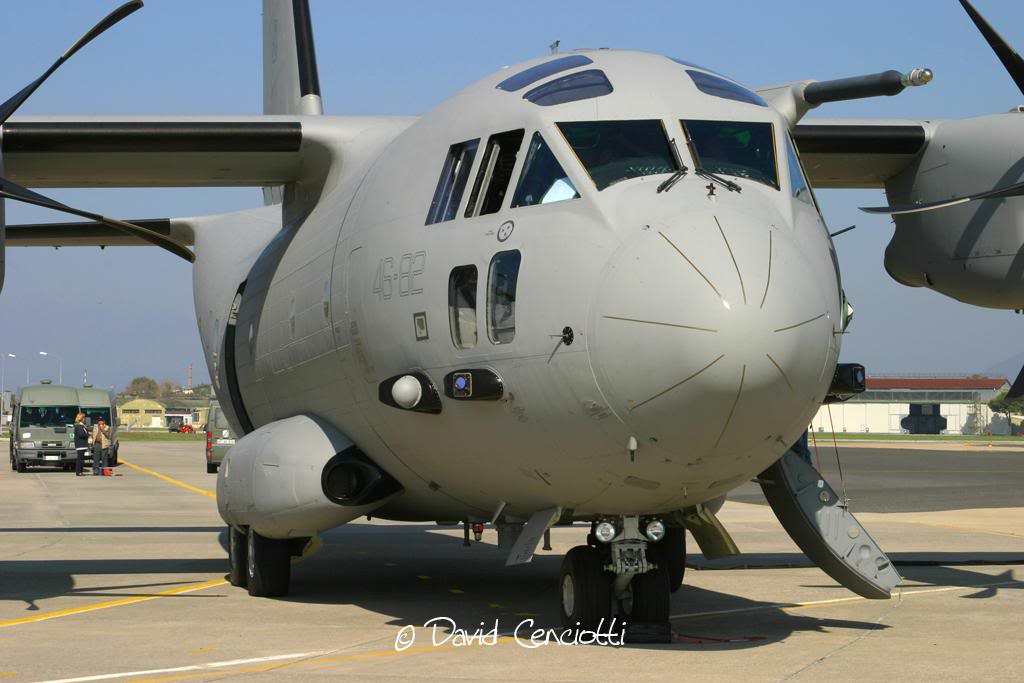On October 13th 2007 I had the possibility to fly a mission on board an Alenia C-27J “Spartan”. The aircraft, serialled C.S.X. 62127 and wearing the JCA winner logo, is owned by Alenia Aeronautica; the company uses it for demo tours, exhibitions and airshows. The C-27J I embarked into was actually tasked for a transport from Ciampino to Pisa, where a few journalists and VIPs had been invited to attend a tactical event organised by the 46th Air Brigate (see pictures below) to demonstrate the ItAF intra theatre airlift capabilities and to show the high degree of interoperability between the C-130J and the C-27J.
The aircraft was piloted by two Alenia test pilots (Marco Venanzetti and Enrico Scarabotto), who transformed the short flight is something more than a normal passenger flight.
This is a short report on that experience.
I’m strapped in the fuselage of the “I-2127” flight. We have just released the brakes and we are accelerating along runway 15 at Ciampino. The aircraft is vibrating under maximum thrust provided by the two Rolls-Royce AE2100 engines and suddenly we begin a 30 degr. steep climb: an “aggressive” procedure used “in theatre” to bring the aircraft beyond the reach of MANPADS in the shortest time possible. Nose down again, pulling almost 1 negative G, we level off at 1.000 ft heading VFR, VMC, towards the Tyrrhenian Sea. We are now cruising slightly below 200 KIAS but still accelerating. Background noise inside the fuselage is low and passengers can talk without shouting like needed in the G.222. In a few minutes we are “feet wet” (above the sea) and Scarabotto, the PIC (Pilot In Command) on the left seat, begins a descent to low level proceeding with a North West heading along the coastline towards the boundaries of the Rome Terminal Area. As soon as the aircraft is firmly established at the preplanned crusing speed and altitude I take my camera and climb in the cockpit. The first thing I notice is the digital appearance of the avionics, with a two pilots cockpit quite different from the one of the old fashioned G.222. The flight deck looks very similar to that of the C-130J. The NVG compatible set up is based on the Electronic Flight Instrumentation System (EFIS) that incorporates five liquid crystal head-down colour displays, one of which is displaying our route on a moving map that is more advanced than those of the Tornado. Just a few instruments are still analogue. Unfortunately, unlike the ItAF aircraft, this C-27 is not equipped with the Head Up Display (it lacks also the refueling probe).
After a brief familiarization, I go back to my seat to fasten my seat belt before the aircraft begins a series of 60° bank turns with the rear door opened. Apparently the C-27 is extremely reactive, allowing pilots to promptly react to any threat a feature that will be very useful in the Afghan theatre where the aircraft is going to be deployed by the ItAF (whose 4 examples already taken on charge have already logged 1.000 flight hours on the type) in the next months.

Door closed again, we level out before entering a wingover. The throttles go to the full power and at 220 KIAS the pilots begin to pull back the control stick. As we reach the apex, 60 deg. pitch-up, the aircraft rolls 110 deg to the right. Wow! I’ve never “tasted” something similar inside such a large aircraft. Under about 2 or 3 Gs I try to take a few pictures of the left Rolls-Royce AE2100-D2 turboprop engine nacelle from the small fuselage window behind me.
There’s no time to relax and after transiting through the Grosseto control zone we approach Pisa airport. We enter the visual patter and overflying the runway we prepare for a steep landing. Idle power, flaps down, the 30 deg. dive of the so-called “Sarajevo landing” is a technique used to reduce the exposure of the mid-sized transport aicraft during approaches to landing fields located in high lethality scenarios. As soon as we gently touch down on runway 04L, pilots apply maximum reverse thrust and brakes and the aircraft is able to vacate the runway in about 500 meters. Even if it was not a pure display flight like the one described here, it was an extremely interesting experience to better undestand the capabilities and performance of an aircraft that has been selected for the U.S. Army and U.S. Air Force Joint Cargo Aircraft Program, that has been ordered by the ItAF (12 examples), Hellenic Air Force (12), Lithuanian Air Force (1), Bulgarian Air Force (5) and Romanian Air Force (7), is under evaluation by the Royal Australian Air Force and the Canadian Armed Forces.
The following pictures were taken at Pisa during the tactical event.
After attending the event in Pisa, I boarded again the Alenia C-27J to go back to Ciampino. Noteworthy, the pilot on the right seat of the C-27 was Gen. Vincenzo Camporini, ItAF Chief of Staff (from Feb. 12th 2008 Chief of Defense Staff).












